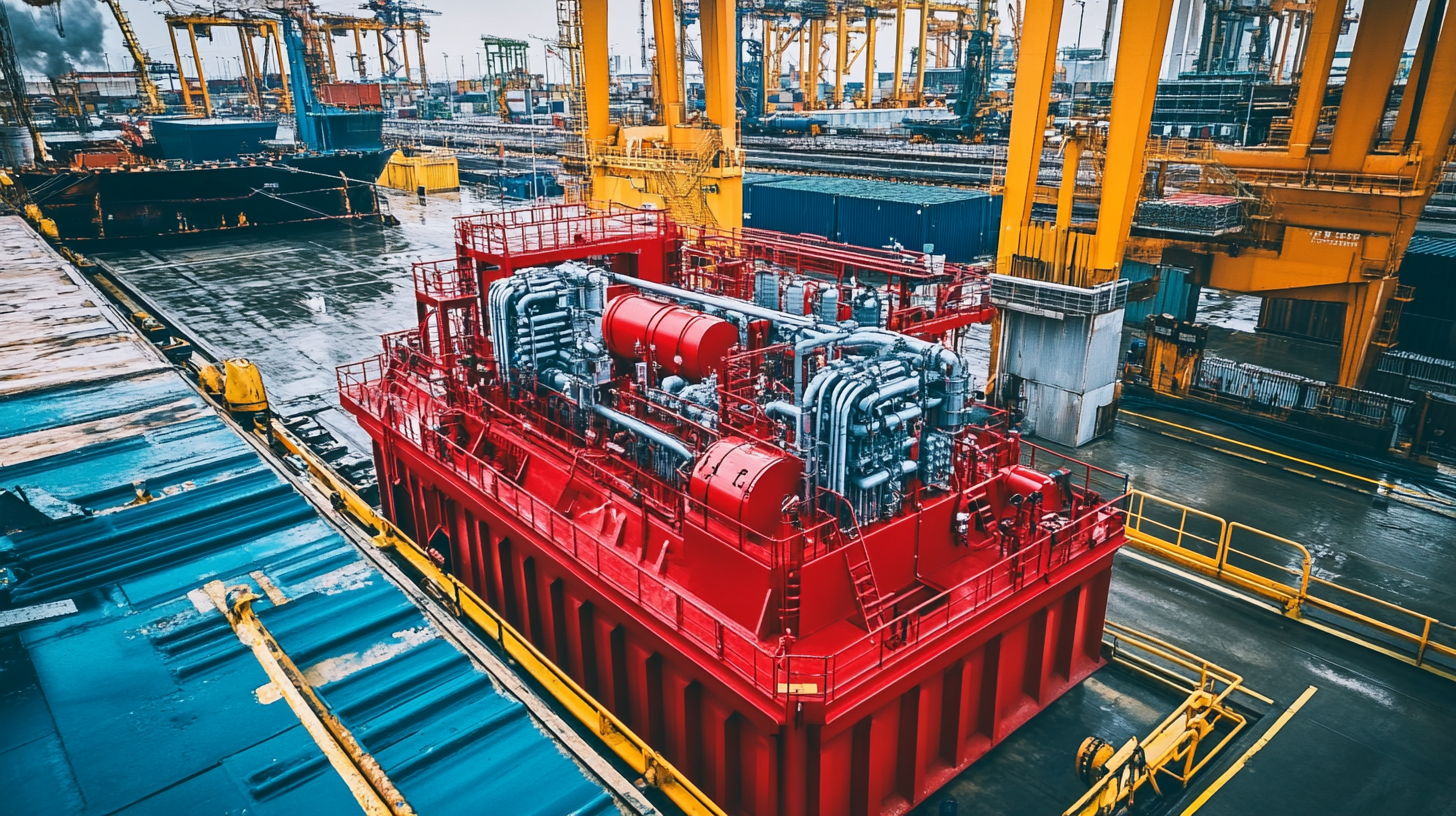
-
Home
-
Products
-
Service
-
About Us
-
Solution
-
Videos
-
News
-
Contact Us
Leave Your Message

In today's complex trade landscape, navigating global tariffs has become crucial for businesses aiming to thrive, particularly in the competitive market for Heavy Duty Diesel Generators. As the United States and China continue to engage in mutually reinforcing tariffs, many might perceive this as a limitation to growth. However, Chinese manufacturers are finding innovative ways to overcome these challenges, resulting in a paradoxical increase in exports. This blog aims to explore how the strategic advantages and engineering excellence of Chinese-made Heavy Duty Diesel Generators can lead to success even amidst economic pressures. By understanding the intricacies of global tariffs, businesses can tap into the exceptional value and reliability offered by these generators, ensuring they remain competitive in both domestic and international markets. Join us as we delve into the factors that contribute to the resilience of Chinese manufacturing in the face of fluctuating trade dynamics.

The interplay of U.S.-China tariffs has significantly affected the heavy-duty diesel generator market, with manufacturers and consumers alike feeling the repercussions. As businesses in the United States grapple with increasing production costs arising from these tariffs, the economic landscape for importing heavy-duty diesel generators from China has shifted dramatically. The additional taxes imposed on Chinese goods drive up prices, leading U.S. companies to reevaluate their sourcing strategies and explore alternatives. Consequently, understanding these tariff impacts is crucial for any business looking to sustain operations while navigating these turbulent waters.
Moreover, companies are not only facing higher costs but are also challenged by the uncertainty that tariffs bring. Planning and budgeting for capital expenditures involving heavy-duty diesel generators have become more complex, requiring businesses to consider long-term implications versus immediate needs. Importers must carefully assess the benefits of maintaining their purchases from Chinese suppliers against potential tariffs, while also monitoring policy changes that could affect future duties. By staying informed and agile, companies can better position themselves to thrive amidst these economic challenges and continue leveraging the advantages of high-quality diesel generators from China.
This chart displays the average import tariffs on heavy-duty diesel generators from China to the U.S. over the past five years and shows the corresponding market value of these generators during the same period. The data highlights how shifts in tariffs can influence market trends.
In today’s increasingly tariff-driven market, Chinese manufacturers of heavy-duty diesel generators must adopt innovative strategies to remain competitive. According to a report by Market Research Future, the global diesel generator market is expected to reach approximately $23 billion by 2026, growing at a CAGR of 6.3% during the forecast period. This growth presents a unique opportunity for Chinese manufacturers to capture market share, but navigating tariffs can pose significant challenges.
One effective strategy is to invest in research and development (R&D) to enhance product efficiency and reliability. A McKinsey report highlights that companies leading in R&D tend to outperform their peers by 30% in terms of revenue growth. By focusing on technological advancements that reduce fuel consumption and emissions, Chinese manufacturers can not only meet stringent global standards but also appeal to environmentally conscious markets. Additionally, optimizing supply chains and exploring free trade zones for manufacturing can mitigate the impact of tariffs, allowing for more competitive pricing without sacrificing quality.
Furthermore, leveraging strategic partnerships across borders can facilitate better market access. The International Trade Centre indicates that forming alliances can lead to increased innovation and expansion into new regions, ultimately providing a buffer against tariff fluctuations. Chinese manufacturers that embrace these strategies will better navigate the complexities of global tariffs and position themselves for long-term success in the diesel generator market.
| Generator Model | Power Output (kW) | Fuel Type | Tariff Impact (%) | Manufacturer |
|---|---|---|---|---|
| XG5000 | 5000 | Diesel | 10 | Zhejiang Generators Co. |
| YB8000 | 8000 | Diesel | 12 | Jiangsu Power Co. |
| TG10000 | 10000 | Diesel | 15 | Guangdong Diesel Engines Ltd. |
| DF12000 | 12000 | Diesel | 18 | Shandong Energy Group |
| HP15000 | 15000 | Diesel | 20 | Hebei Generators Ltd. |
The landscape of global tariffs poses significant challenges for industries reliant on heavy-duty diesel generators, especially those sourced from China. However, technological innovations in diesel generator design and manufacturing have emerged as powerful tools to mitigate these impacts. According to a recent report by the International Energy Agency (IEA), advancements in engine efficiency and emissions reduction technologies can improve operational costs by up to 15%, making these generators more competitive even in a tariff-heavy environment.
Moreover, the integration of IoT (Internet of Things) capabilities into diesel generators is revolutionizing the sector. A survey conducted by MarketsandMarkets indicates that the smart generator market is expected to reach $2.6 billion by 2025, driven by demand for remote monitoring and predictive maintenance features. Such innovations not only elevate the value proposition of diesel generators but also enhance durability and reliability in various applications—from construction sites to emergency backup power. This technological edge allows companies to navigate the complexity of tariffs while still meeting their operational requirements effectively.

In the competitive landscape of the global diesel generator market, quality and reliability play a pivotal role in establishing trust with buyers. As the market continues to grow, with segments categorized by power ratings and fuel types, manufacturers must focus on these key attributes to differentiate their products. The market is segmented into several power ratings, including below 75 kVA, 75-375 kVA, 375-750 kVA, and above 750 kVA, each catering to distinct customer needs. Furthermore, the choice of fuel—diesel or natural gas—can significantly impact performance and preferences in various applications, from continuous load operations to emergency power solutions.
To thrive in this evolving market, companies should prioritize product quality through rigorous testing and certification processes. Implementing stringent quality control measures will not only enhance product reliability but also reassure customers of their investment. Additionally, engaging in open communication with clients about generator specifications and maintenance practices can foster trust and encourage long-term relationships.
Tips for standing out in this market include leveraging technology to enhance generator efficiency and performance, offering customized solutions to meet specific customer requirements, and keeping abreast of global tariff changes to optimize pricing strategies. By focusing on these areas, companies can successfully navigate the complexities of the diesel generator industry while building a strong reputation among international buyers.

As global markets evolve, businesses must expand their horizons beyond tariff constraints to ensure sustainable growth. The rapidly changing landscape presents both challenges and opportunities for companies engaged in industries like utilities and renewable energy. In 2024, demand for renewable resources surged, positively impacting the energy sector's development amidst shifting trade dynamics. Particularly, as the electricity demand intensifies, companies are urged to reevaluate their supply chains and sourcing strategies, considering how tariffs can affect their bottom line.
**Tip: Diversify your supplier base.** Engaging with manufacturers from various countries can mitigate risks associated with tariff increases and foster resilience against market shocks.
China's investment-led growth model remains pivotal as the nation transitions from a manufacturing hub to a technology-driven economy. This evolution, however, comes with vulnerabilities, including the impact of climate change on essential food supply chains. Addressing these issues necessitates a forward-thinking approach, focusing on innovation and sustainability.
**Tip: Invest in renewable technology.** Embracing advanced technology not only bolsters operational efficiency but also positions your business favorably in a market leaning toward eco-friendly solutions.
By navigating these complexities with strategic foresight, businesses can thrive in a competitive global environment, leveraging insights from industry reports and adapting to new growth models.